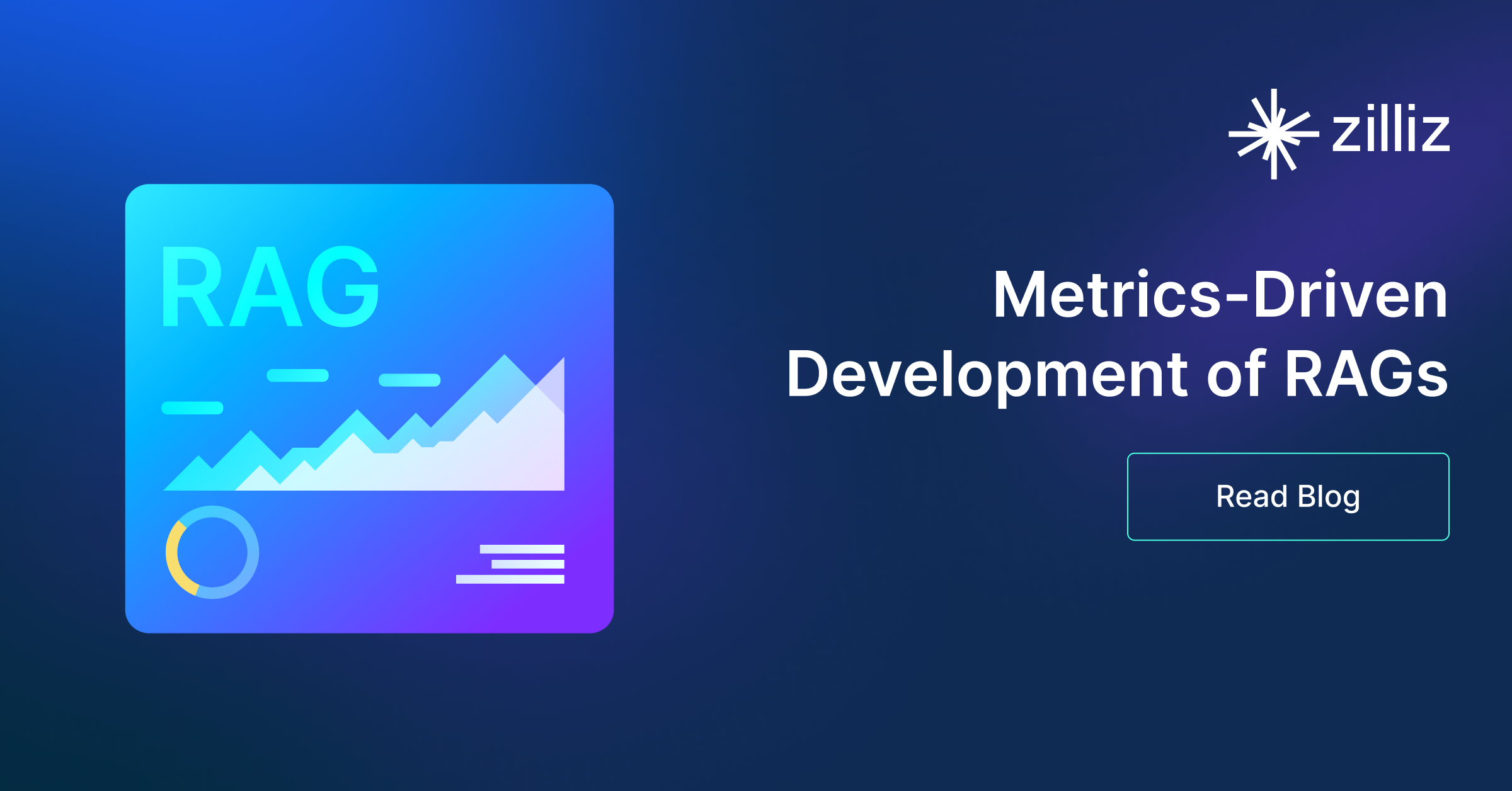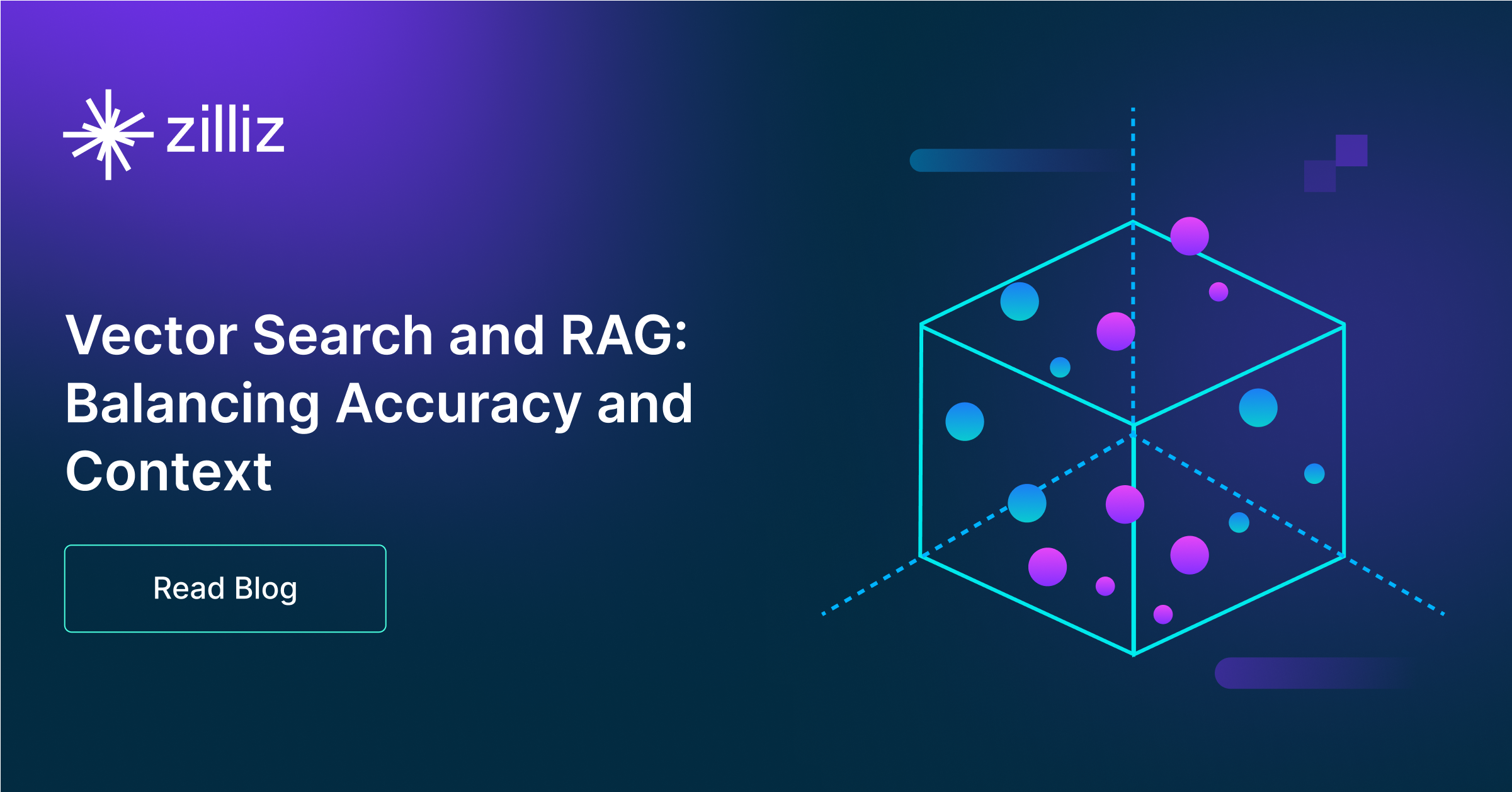Build RAG Chatbot with LangChain, Milvus, Fireworks AI DeepSeek R1, and Nomic Embed Text V2
Introduction to RAG
Retrieval-Augmented Generation (RAG) is a game-changer for GenAI applications, especially in conversational AI. It combines the power of pre-trained large language models (LLMs) like OpenAI’s GPT with external knowledge sources stored in vector databases such as Milvus and Zilliz Cloud, allowing for more accurate, contextually relevant, and up-to-date response generation. A RAG pipeline usually consists of four basic components: a vector database, an embedding model, an LLM, and a framework.
Key Components We'll Use for This RAG Chatbot
This tutorial shows you how to build a simple RAG chatbot in Python using the following components:
- LangChain: An open-source framework that helps you orchestrate the interaction between LLMs, vector stores, embedding models, etc, making it easier to integrate a RAG pipeline.
- Milvus: An open-source vector database optimized to store, index, and search large-scale vector embeddings efficiently, perfect for use cases like RAG, semantic search, and recommender systems. If you hate to manage your own infrastructure, we recommend using Zilliz Cloud, which is a fully managed vector database service built on Milvus and offers a free tier supporting up to 1 million vectors.
- Fireworks AI DeepSeek R1: This advanced model specializes in deep data exploration and insight generation. With robust analytical capabilities and high accuracy, it efficiently identifies patterns and trends within large datasets. Ideal for business intelligence, market analysis, and research applications, DeepSeek R1 empowers organizations to make data-driven decisions confidently.
- Nomic Embed Text V2: An open-source, multilingual text embedding model using a Mixture-of-Experts (MoE) architecture for efficient processing. Trained on 1.6 billion text pairs, it excels in retrieval tasks, supports flexible embedding dimensions, and optimizes storage and compute costs. Its training data and code are fully open-sourced for transparency.
By the end of this tutorial, you’ll have a functional chatbot capable of answering questions based on a custom knowledge base.
Note: Since we may use proprietary models in our tutorials, make sure you have the required API key beforehand.
Step 1: Install and Set Up LangChain
%pip install --quiet --upgrade langchain-text-splitters langchain-community langgraph
Step 2: Install and Set Up Fireworks AI DeepSeek R1
pip install -qU "langchain[fireworks]"
import getpass
import os
if not os.environ.get("FIREWORKS_API_KEY"):
os.environ["FIREWORKS_API_KEY"] = getpass.getpass("Enter API key for Fireworks AI: ")
from langchain.chat_models import init_chat_model
llm = init_chat_model("accounts/fireworks/models/deepseek-r1", model_provider="fireworks")
Step 3: Install and Set Up Nomic Embed Text V2
pip install -qU langchain-nomic
import getpass
import os
if not os.environ.get("NOMIC_API_KEY"):
os.environ["NOMIC_API_KEY"] = getpass.getpass("Enter API key for Nomic: ")
from langchain_nomic import NomicEmbeddings
embeddings = NomicEmbeddings(model="nomic-ai/nomic-embed-text-v2-moe")
Step 4: Install and Set Up Milvus
pip install -qU langchain-milvus
from langchain_milvus import Milvus
vector_store = Milvus(embedding_function=embeddings)
Step 5: Build a RAG Chatbot
Now that you’ve set up all components, let’s start to build a simple chatbot. We’ll use the Milvus introduction doc as a private knowledge base. You can replace it with your own dataset to customize your RAG chatbot.
import bs4
from langchain import hub
from langchain_community.document_loaders import WebBaseLoader
from langchain_core.documents import Document
from langchain_text_splitters import RecursiveCharacterTextSplitter
from langgraph.graph import START, StateGraph
from typing_extensions import List, TypedDict
# Load and chunk contents of the blog
loader = WebBaseLoader(
web_paths=("https://milvus.io/docs/overview.md",),
bs_kwargs=dict(
parse_only=bs4.SoupStrainer(
class_=("doc-style doc-post-content")
)
),
)
docs = loader.load()
text_splitter = RecursiveCharacterTextSplitter(chunk_size=1000, chunk_overlap=200)
all_splits = text_splitter.split_documents(docs)
# Index chunks
_ = vector_store.add_documents(documents=all_splits)
# Define prompt for question-answering
prompt = hub.pull("rlm/rag-prompt")
# Define state for application
class State(TypedDict):
question: str
context: List[Document]
answer: str
# Define application steps
def retrieve(state: State):
retrieved_docs = vector_store.similarity_search(state["question"])
return {"context": retrieved_docs}
def generate(state: State):
docs_content = "\n\n".join(doc.page_content for doc in state["context"])
messages = prompt.invoke({"question": state["question"], "context": docs_content})
response = llm.invoke(messages)
return {"answer": response.content}
# Compile application and test
graph_builder = StateGraph(State).add_sequence([retrieve, generate])
graph_builder.add_edge(START, "retrieve")
graph = graph_builder.compile()
Test the Chatbot
Yeah! You've built your own chatbot. Let's ask the chatbot a question.
response = graph.invoke({"question": "What data types does Milvus support?"})
print(response["answer"])
Example Output
Milvus supports various data types including sparse vectors, binary vectors, JSON, and arrays. Additionally, it handles common numerical and character types, making it versatile for different data modeling needs. This allows users to manage unstructured or multi-modal data efficiently.
Optimization Tips
As you build your RAG system, optimization is key to ensuring peak performance and efficiency. While setting up the components is an essential first step, fine-tuning each one will help you create a solution that works even better and scales seamlessly. In this section, we’ll share some practical tips for optimizing all these components, giving you the edge to build smarter, faster, and more responsive RAG applications.
LangChain optimization tips
To optimize LangChain, focus on minimizing redundant operations in your workflow by structuring your chains and agents efficiently. Use caching to avoid repeated computations, speeding up your system, and experiment with modular design to ensure that components like models or databases can be easily swapped out. This will provide both flexibility and efficiency, allowing you to quickly scale your system without unnecessary delays or complications.
Milvus optimization tips
Milvus serves as a highly efficient vector database, critical for retrieval tasks in a RAG system. To optimize its performance, ensure that indexes are properly built to balance speed and accuracy; consider utilizing HNSW (Hierarchical Navigable Small World) for efficient nearest neighbor search where response time is crucial. Partitioning data based on usage patterns can enhance query performance and reduce load times, enabling better scalability. Regularly monitor and adjust cache settings based on query frequency to avoid latency during data retrieval. Employ batch processing for vector insertions, which can minimize database lock contention and enhance overall throughput. Additionally, fine-tune the model parameters by experimenting with the dimensionality of the vectors; higher dimensions can improve retrieval accuracy but may increase search time, necessitating a balance tailored to your specific use case and hardware infrastructure.
Fireworks AI DeepSeek R1 optimization tips
DeepSeek R1 is a strong model for RAG applications requiring high-quality retrieval and generation. Optimize performance by using an efficient document embedding strategy, ensuring that retrieved documents are highly relevant before passing them to the model. Structure prompts effectively, emphasizing key details upfront to guide responses. Set temperature between 0.1 and 0.2 for factual accuracy and adjust top-p for response variety when needed. Minimize latency by caching frequent queries and using batched API calls for bulk processing. If running on Fireworks AI infrastructure, take advantage of GPU acceleration to improve throughput. Implement response streaming for interactive applications requiring low-latency output. Continuously monitor query performance and adjust retrieval depth based on complexity to optimize efficiency.
Nomic Embed Text V2 optimization tips
Nomic Embed Text V2 is a versatile embedding model suited for general-purpose text search tasks in RAG systems. Optimize efficiency by preprocessing input data to remove irrelevant noise and focus on the most meaningful content, which can help reduce computational overhead. For faster retrieval, employ approximate nearest neighbor (ANN) search algorithms like HNSW or FAISS to speed up the search process while maintaining accuracy. Consider implementing vector quantization techniques to reduce storage space without significantly affecting retrieval quality. Utilize batching to process multiple texts in parallel and minimize API latency. If working with large datasets, regularly update embeddings to reflect the most recent information, ensuring that your retrieval system remains relevant and effective.
By implementing these tips across your components, you'll be able to enhance the performance and functionality of your RAG system, ensuring it’s optimized for both speed and accuracy. Keep testing, iterating, and refining your setup to stay ahead in the ever-evolving world of AI development.
RAG Cost Calculator: A Free Tool to Calculate Your Cost in Seconds
Estimating the cost of a Retrieval-Augmented Generation (RAG) pipeline involves analyzing expenses across vector storage, compute resources, and API usage. Key cost drivers include vector database queries, embedding generation, and LLM inference.
RAG Cost Calculator is a free tool that quickly estimates the cost of building a RAG pipeline, including chunking, embedding, vector storage/search, and LLM generation. It also helps you identify cost-saving opportunities and achieve up to 10x cost reduction on vector databases with the serverless option.
 Calculate your RAG cost
Calculate your RAG cost
What Have You Learned?
What an incredible journey we've embarked on together! Throughout this tutorial, we've woven together the powerful threads of a robust framework, an efficient vector database, a dynamic large language model (LLM), and an innovative embedding model to build a cutting-edge RAG system. What a combination of capabilities! You’ve seen firsthand how LangChain serves as the glue that ties everything in your RAG application together, ensuring seamless interaction between components. The Milvus vector database has empowered you to conduct lightning-fast searches, unlocking your data like never before!
Isn't it amazing how the LLM can generate natural, engaging conversations, bringing your application to life with conversational intelligence? And let’s not overlook the Nomic Embed Text V2, which has transformed raw information into rich semantic representations, allowing your models to understand context and nuance in ways you've never imagined.
Remember the optimization tips we discussed, as well as the awesome free cost calculator that will help you manage resources effectively? These insights are crucial as you step into the world of development. Now it’s your turn! Dive into building, optimizing, and innovating your own RAG applications. The possibilities are endless, and you have all the tools you need to create something truly remarkable. Let’s go make some magic happen!
Further Resources
🌟 In addition to this RAG tutorial, unleash your full potential with these incredible resources to level up your RAG skills.
- How to Build a Multimodal RAG | Documentation
- How to Enhance the Performance of Your RAG Pipeline
- Graph RAG with Milvus | Documentation
- How to Evaluate RAG Applications - Zilliz Learn
- Generative AI Resource Hub | Zilliz
We'd Love to Hear What You Think!
We’d love to hear your thoughts! 🌟 Leave your questions or comments below or join our vibrant Milvus Discord community to share your experiences, ask questions, or connect with thousands of AI enthusiasts. Your journey matters to us!
If you like this tutorial, show your support by giving our Milvus GitHub repo a star ⭐—it means the world to us and inspires us to keep creating! 💖
- Introduction to RAG
- Key Components We'll Use for This RAG Chatbot
- Step 1: Install and Set Up LangChain
- Step 2: Install and Set Up Fireworks AI DeepSeek R1
- Step 3: Install and Set Up Nomic Embed Text V2
- Step 4: Install and Set Up Milvus
- Step 5: Build a RAG Chatbot
- Optimization Tips
- RAG Cost Calculator: A Free Tool to Calculate Your Cost in Seconds
- What Have You Learned?
- Further Resources
- We'd Love to Hear What You Think!
Content
Vector Database at Scale
Zilliz Cloud is a fully-managed vector database built for scale, perfect for your RAG apps.
Try Zilliz Cloud for Free


